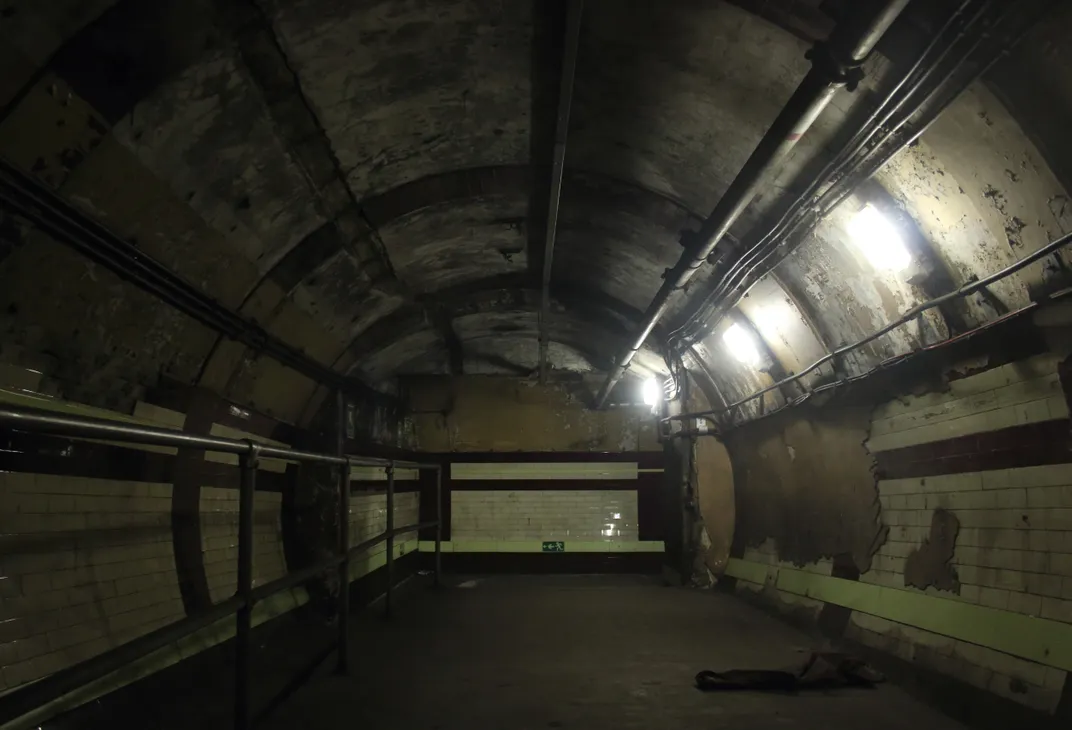Historic Sites of the London Underground Will Soon Open for Visitors
See Churchill’s blitz bunker and the first underwater tunnel ever built
/https://tf-cmsv2-smithsonianmag-media.s3.amazonaws.com/filer/b0/4d/b04df14b-75ac-4f8b-89d3-8aeb6c80eb2f/rafterylowe_tateharmer_brunel_12_resize.jpeg)
When the London Underground was first opened 147 years ago, it was called “the Eighth Wonder of the World” for good reason. For the first time in history, engineers successfully dug a network of train tunnels running beneath the city’s streets, allowing the city to expand and revolutionizing public transportation.
Now, the London Underground is reopening two sites for public tours: the entrance to the first underwater tunnel ever constructed, and the remains of the bunker that Winston Churchill used to hide during the London Blitz.
The Thames Tunnel wasn’t the first attempt at building a tunnel beneath London’s famous river, but it was the first successful one. At the time construction was extremely difficult thanks to the soft, muddy silt and clay that workers had to bore through beneath the Thames.
During the 18 years that the tunnel took to build, six men were killed when the treacherous river burst through, flooding it, Sarah Ann Harris reports for the Huffington Post. Even one of the tunnel’s designers, Isambard Kingdom Brunel, nearly lost his life during the construction.
In order to safely dig out the tunnel, Brunel’s father Marc devised a remarkable new device to aid in the construction: a “tunneling shield.” A forefather of the tunnel boring machines still used to dig deep tunnels today, the invention was both an excavation tool and a seal against leaks. The shield kept the soft clay in place as workers could dig out the tunnel ahead, while others built the tunnel’s walls and foundations behind it, Alissa Walker writes for Gizmodo.
The Thames tunnel was originally built for wheeled carts and carriages to cross beneath the river. While the entrance for these vehicles was never completed, in 1843 the tunnel opened to the public. By descending through a staircase into a large hall, visitors could stroll through the revolutionary feat of engineering. In 1869, the tunnel was given over to the growing London Underground, which converted it into a railway, Walker writes.
For the first time in nearly 150 years, the entrance is open to visitors. The Brunel Museum has renovated the Grand Entrance Hall as an event space, giving visitors the chance to once again visit a place that helped shape modern cities across the world.

Meanwhile, just a few miles away, history buffs now have the chance to tour an abandoned subway station that was transformed into a bomb shelter for Winston Churchill. Located in the Mayfair neighborhood, the Down Street station first opened to the public in 1907. However, authorities closed the station in 1932, as it wasn’t being used enough to justify keeping it open, the BBC reports.
Just a few years after it closed, the station was revived and converted into a bunker to shield Churchill and his staff as Nazi Germany razed London during the Blitz.
Code-named “The Barn,” the Down Street station is being reopened for guided tours by the London Transport Museum this May. As part of the “Hidden London” series, visitors will get a rare chance to see not just the bunker where Churchill waited out the Blitz, but several other long-abandoned stations and tunnels beneath London’s streets, Attila Nagy writes for Gizmodo. Tickets for the summer season’s tours go on sale later this month.
For anyone curious about what secrets lie in the maze of tunnels that makes up the Underground, these two historic sites are not to be missed.